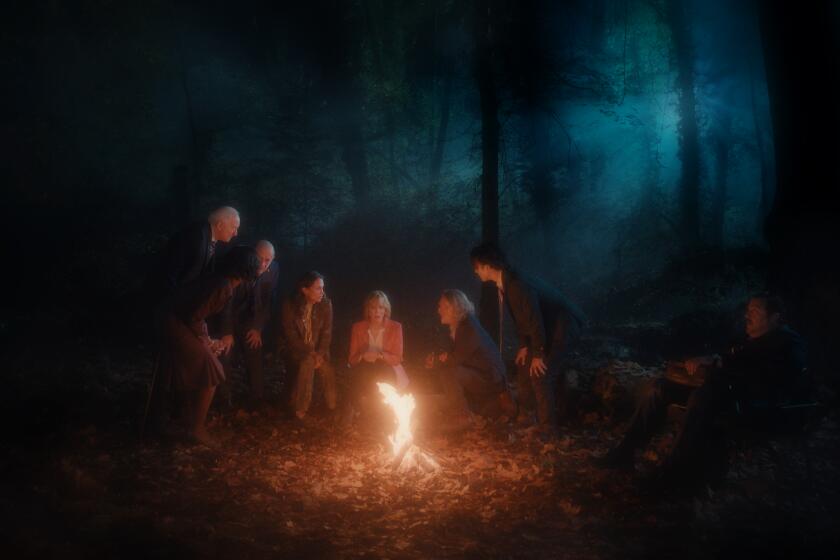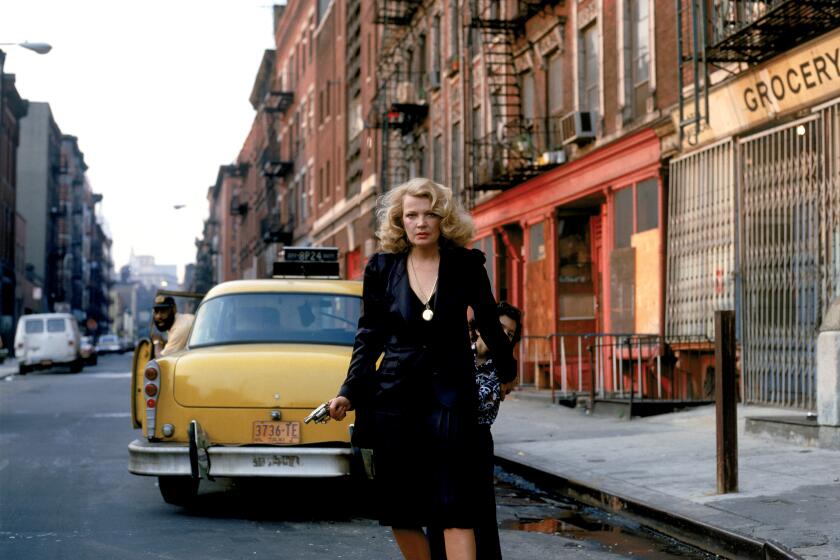A Nationl Cinema Without a Nation : BRIDGE OF LIGHT: Yiddish Film Between Two Worlds, <i> By J. Hoberman (Schocken Books/The Museum of Modern Art; $40; 401 pp.)</i>
A sweatshop girl is jilted by the fiance she has put through medical school and then struck by the car that is taking him to the synagogue where he will be married to someone else.
A judge who lost his memory in a car crash after his wife died giving birth meets his child in the courtroom and wails, “I see my daughter for the first time as a criminal!”
The father of the groom recognizes the mother of the bride as the girl he seduced and abandoned years before, causing her to scream, “Your son has married your own daughter!”
And they all lived happily ever after.
Sort of.
Only in the unruly world of Yiddish film were plots this heroically contrived not only possible but the norm. When an ad for one picture announced, “If you are a Jew and especially a Russian Jew--you will tremble with excitement, you will cry,” it was no idle boast. Yet, like the language itself, Yiddish film was worthy of more respect than it often got, it at times raised itself to heights of genuine emotional power and aesthetic accomplishment.
It is very much to J. Hoberman’s credit that in “Bridge of Light: Yiddish Film Between Two Worlds” he slights neither the shund (trash) nor the serious. Prodigiously researched and critically astute, this is a readable work of scholarship that takes a well-earned place as the most authoritative word on a very curious corner of film history.
Even in their heyday in the decade before World War II, Yiddish films appeared sporadically enough to be considered “a perpetual novelty” by their audience. Produced by “a unique mixture of naive businessmen and opportunistic idealists,” as Hoberman puts it, they were “not just a national cinema without a nation-state, but a national cinema that, with every presentation, created its own ephemeral nation-state.”
In dealing with this unique industry, which existed more or less simultaneously in Poland, the Soviet Union and the United States, Hoberman has cast his net commendably wide, describing both how economic and political conditions created a mass Yiddish-speaking audience and the way the vibrant Yiddish theatrical crowd came to serve it. And he has put as much energy into his thumbnail sketches of intriguing non-film personalities (such as the Vilner balebesl, a 19th-Century boy-wonder cantor who lost his voice and his sanity after an affair with a Polish singer) as he has into the films themselves.
It is with the films, however, that Hoberman has done his most important work. He has tracked down what must be every single Yiddish film ever made, whether it exists in fragments or only in press accounts, given all available production details and placed it in an aesthetic context. Though such familiar classics as “Der Dibek,” “Tevye” and “Grine Felder” are written about at length, Hoberman does not slight such lesser-known but important works as the anti-Nazi “Der Vanderer Yid” and “Nosn Beker Fort Aheym,” the only Yiddish feature-length talkie produced in the Soviet Union.
Finally, Hoberman sees Yiddish films in their prime as “eternally Janus-faced,” addressing “the dislocation between the Old Country and the New World, parent and child, folk community and industrial society, worker and allrightnik that existed within each individual member of the audience.” And once that “extended family quarrel” began to mean less and less to increasingly assimilated Jewish audiences, the extinction of Yiddish film was only a matter of time.
More to Read
Only good movies
Get the Indie Focus newsletter, Mark Olsen's weekly guide to the world of cinema.
You may occasionally receive promotional content from the Los Angeles Times.











